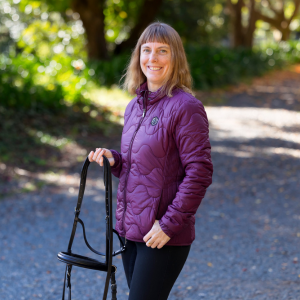
A deep dive into extended trot
Should extended trot be allowed in dressage, or should we return to what used to be extended trot but is now usually referred to as medium trot? This article looks at just one aspect: the toe-first landing of the front legs which occurs when the horse’s forehand rotates so much that the legs come out well in front of the nose. We also look at a beautiful example of what I would call a biomechanically correct extended trot, and compare the heel first landing that we see here.
I have spent literally days looking for videos of a competition horse in a biomechanically correct extended trot. Although some are better than others, I haven’t managed to find one that I am fully satisfied with.
The reason I am looking is that a few people have informed me that my illustrations of a biomechanically correct extended trot are in fact not valid because it is “only a medium trot.” An extended trot must apparently be “more uphill” and “in an advanced frame”.
After a few days of hunting around, I finally found a beautiful video of a biomechanically correct extended trot by Nicolas A. Diaz. I’ve contacted him and he has kindly given me permission to share and analyse his video. I’ve compared it to the extended trot from a gold medal winning dressage test.
There is lots to discuss, but what I would like to talk about today is the landing of the front hooves. In previous discussions, many people have defended the front leg being well out in front of the nose, citing various reasons, such as the horse having a conformationally short neck, or the horse needing to travel uphill and in collection for “true extended trot”.
When the front hoof contacts the ground, it cannot touch down any further forward than the horse’s nose. This is physically impossible, and we can see it the second pair of screenshots in the first photo.
When a horse is moving correctly in balance, in extended trot, the hoof lands heel first. The leg has just started to move backwards relative to the horse’s body as the hoof touches the ground, which is why even for horses that are moving correctly, the hoof may come a fraction in front of the nose in full extension. However, as the hoof touches the ground, the hoof should still be moving forward relative to the ground: so at this point, forward speed of the horse relative to the ground is greater than backward speed of the leg relative to the horse. The horse lands on the heel, which cushions the impact and allows for smooth continuation of the movement: with the hoof absorbing the impact as nature intended. Nicolas’s grey horse shows this beautifully. Note also the happy facial expression and soft body language.
In our gold medal winning example, something completely different is happening. In phase 1, the horse hollows his back and rotates the forehand, and by doing this he is able to throw the front legs high without engaging the quarters, sucking back the neck to enable the rotation. The legs are not just a fraction, but significantly in front of the nose. He has gained forward momentum and his legs are high. As his front legs return to the ground, they reach the point where, relative to the joints, the hoof would normally contact the ground. This is phase 2 in our series of 3 photos. We see a little flick as the heel drops slightly ready for impact. If the hoof impacted the ground here, it would be a biomechanically correct heel first landing with the hoof still moving forward relative to the ground. However, due to the rotation of the forehand, and the height of the leg, and the fact that the neck is contracted, it is still significantly above the ground. The hoof starts to rotate, toe dropping, as it continues to move backwards relative to the body of the horse: by this stage it should have been supported by the ground, but in the absence of that support, it dangles, and by the time it contacts the ground, in phase 3 of our photos, the hoof is moving backwards relative to the ground. The only way for the horse to remain upright is for a toe first landing. The toe takes the full impact of the horse’s weight, forces exacerbated by the height from which the hoof comes slamming into the ground.
If this exaggerated elevation of the forehand is what is required to distinguish an extended trot from a medium trot, then I do not believe that extended trot should be a movement in dressage. I am aware that hypermobile horses are bred in order to be able to achieve this movement: this is one reason why only certain types of warmbloods stand a chance in the competitive arena. But at what cost to the horse?
Please visit Nicolas’s page to see this video and many more examples of beautiful riding and happy, graceful horses.
Note: I am fully aware that Nicolas’s video is not from directly side-on, and I am inviting commenters on this post to put this aside, because for the purpose of this comparison it’s not relevant: this is because the diagrams are mostly to illustrate the landing of the front hoof. This is also not the place to critique, because nothing is ever 100% perfect: but what we are looking at here are two completely different ways of moving and I would like to talk about why one is detrimental to the horse, and the other is not. Please appreciate how incredibly difficult it was for me to find a video of correct movement at all (which is sad).



